- Products
-
-
Product Features
-
Explore More
-
-
- Solutions
-
-
By Industry
By Department
-
By Business Need
-
-
- Learn & Support
-
-
Product Education
-
Product Support
-
-
- Resources
-
-
Insights
Events
-
-
- Partners
-
SITUATION
• Mackenzie District Council needed an ECM system to support efficient service delivery
• Data security and recordkeeping requirements were top priorities
RESULTS
• Expanded use of Laserfiche from an electronic filing cabinet to a source of truth and workflow orchestration engine
• Integrations with core technologies such as the district council’s ERP enable automated solutions and increased efficiency
• Additional integrations and automated solutions will continue to enhance the employee and customer experience
Mackenzie District Council is one of New Zealand’s 53 district councils, responsible for providing services and managing issues ranging from local infrastructure and building consents to emergency services and food safety. With this broad range of duties, the district council relies on a core group of systems to enable its staff to deliver services efficiently, while keeping data secure and addressing recordkeeping requirements.

“We’ve got a handful of core systems that sit at the heart of our ecosystem,” said Chris Clarke, general manager of Information, Engagement and Community at Mackenize District Council. “One of those is our ERP and of course there’s Office 365, and I would put Laserfiche right up there with those systems. We deal with a lot of confidential information and we have complex recordkeeping requirements, and now it is becoming our workflow orchestration engine. It’s one of the essential tools that all of us use on a daily basis and could not function without.”
When Clarke assumed oversight of the district council’s IT department, the organization performed an assessment of its existing tech stack, revealing significant opportunity for improvement. “Internally, at the time, Laserfiche was perceived as an electronic filing cabinet,” Clarke explained. “But we realized that there was untapped potential for process automation and automated workflows.”
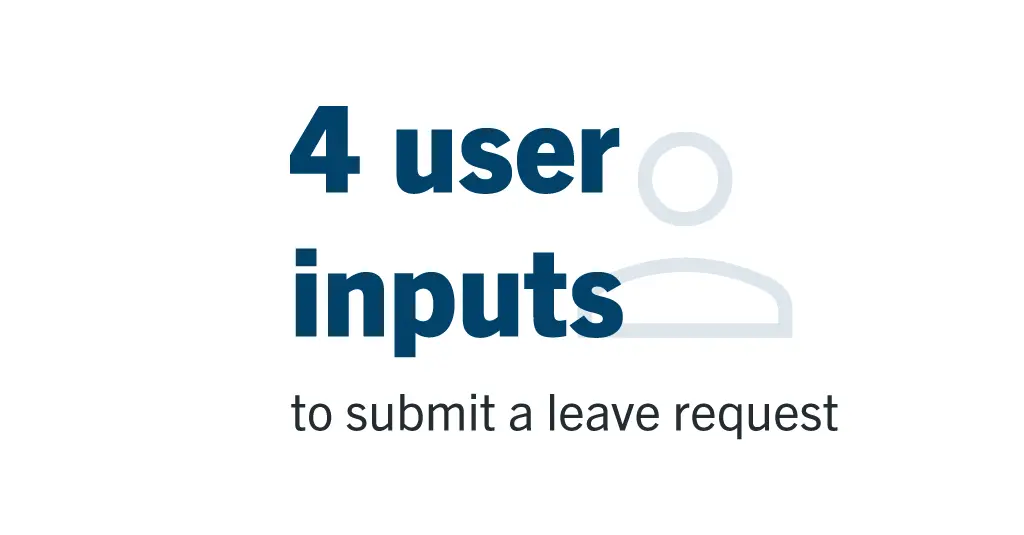 The team got to work on establishing Laserfiche as the district council’s source of truth for recordkeeping, and integrating it with the ERP for a critical solution that the entire organization used: time off requests. “Holiday and leave forms were the first thing we automated because everyone takes leave, and lots of people in the organization have to process leave,” Clarke said. This deceptively small project made a big impact, transforming what once required downloading paper forms, signing them and attaching them to emails for processing, into a task that now took mere seconds.
The team got to work on establishing Laserfiche as the district council’s source of truth for recordkeeping, and integrating it with the ERP for a critical solution that the entire organization used: time off requests. “Holiday and leave forms were the first thing we automated because everyone takes leave, and lots of people in the organization have to process leave,” Clarke said. This deceptively small project made a big impact, transforming what once required downloading paper forms, signing them and attaching them to emails for processing, into a task that now took mere seconds.
“When we first rolled it out, people were skeptical of whether it actually worked, because it seemed too easy,” Clarke added. “All they had to do was two clicks, and they couldn’t believe that was the case.”
IT has now set its sights on transforming the rest of the organization’s workflows, taking a thoughtful approach to change management and prioritization.
“What we’re trying to do is change the perception that Laserfiche is another piece of business software that you just need to use because of recordkeeping requirements,” Clarke said. “It’s about winning hearts and minds, and getting things done. People are starting to think about Laserfiche now as a tool that helps with work, as opposed to yet another system to be wrestled with.”
Clarke and his team have set their sights on systematically transforming the way the district council manages its records, with the goal of leveraging Laserfiche to automate the records management lifecycle, including retention schedules and disposition.
“We’re doing a taxonomy review to assess our existing recordkeeping, and working through licensing, security, roles, etc.,” said Zane Woodfield, ICT manager at Mackenzie District Council. “One of the things that I like about Laserfiche is that we are creating a technology demarcation point-slash-security boundary from all other stuff that’s in the cloud. Now that we have set up Microsoft Entra SSO authentication and some of the foundational pieces with Laserfiche, we feel secure and safe enough to do more.”
Laserfiche’s robust security and compliance tools also support the Mackenzie IT team’s mission to innovate while addressing data safeguards and critical recordkeeping needs.
“For us to impact the organization’s records and processes, we have to have confidence that the audit trail is there; we have to have confidence that the information is going to go to the right people. We have to have all of that confidence in place — and we do with Laserfiche.”
— Chris Clarke, IT General Manager, Mackenzie District Council
“Having the right local support in place has also been a critical part of our success,” added Clarke. “Laserfiche is a very capable and flexible product, but that can bring with it some complexity to ensure the system is configured to meet our specific business needs. Our local partner, ifTHEN, has taken the time to understand our business and our process requirements, and as a result has been able to assist us to configure Laserfiche in a way that delivers the optimum solution to our needs. Without their experience and insight, we would not have been able to effectively utilise many of the more advanced features which are now adding value to both our staff and customers on a daily basis.”
Mackenzie District Council’s IT department has laid a strong foundation for transformative change, and team members are excited to realize the potential for Laserfiche across the organization. Along with their Laserfiche solution provider, ifTHEN Limited, the team feels confident that their Laserfiche initiatives will be a gamechanger for all departments and those they serve.
“We’re just about to embark on a project where we go out to the business and get everyone’s wish list,” Clarke said. “We know that list will be large, but we are hyper focused on the things that really make a difference and give us the biggest bang for our investment, as we’re dealing with public funds.”
One significant project on the horizon is implementing a public portal to make it easier for the public to interface with the district council. Currently, the council’s website hosts downloadable forms that must be scanned or reuploaded for processing, but the IT team hopes to replace those “dumb forms” with Laserfiche Forms. “We’re working through public iterations of forms that will truly transform the customer experience,” Clarke said. “We’re really excited about that.”
 Additional integrations on the roadmap will bring even more possibilities for automated solutions, including an integration with the district council’s GIS and building consent management systems to help streamline the building consent process. As the district council and IT continue to uncover new efficiencies with their Laserfiche projects, the future looks bright.
Additional integrations on the roadmap will bring even more possibilities for automated solutions, including an integration with the district council’s GIS and building consent management systems to help streamline the building consent process. As the district council and IT continue to uncover new efficiencies with their Laserfiche projects, the future looks bright.
“We’ve done the foundational work, so we feel we’re at the beginning of our journey in terms of leveraging the benefits,” Clarke said. “Who knows where it will take us? One of the things that I see which is encouraging is that Laserfiche continues to evolve. We don’t know what the future holds, but I’m confident that Laserfiche will be on that journey with us.”
SITUATION
• Needed to replace a legacy enterprise content management (ECM) system
• Sought a more robust, easier to use platform with advanced integration and automation capabilities
RESULTS
• Common forms and workflow platform shared across schools, sites and departments
• Standardized and automated key processes, including Position Control, the Head Injury Protocol, Student Cumulative Folders and Choice Program applications
• Boosted efficiency and enhanced responsiveness
• Able to better allocate personnel and budget to focus on student outcomes
Palo Alto Unified School District (PAUSD) has been recognized as the No. 1 ranked school district in America with over 10,000 students. These high standards extend throughout all of the district’s operations, from enrollment and academics to hiring and IT processes.
“We’re in the heart of Silicon Valley, and with that comes some high expectations,” said Derek Moore, chief technology officer (CTO) at PAUSD. “With the improvements that we’ve made in our technology and processes, we’ve also raised the bar for ourselves.”

This constant evolution led the district to assess legacy systems and processes, to ensure the highest level of efficiency in operations, with the lowest amount of friction to users. Key to the district’s continuous improvement has been Laserfiche, with which PAUSD replaced a legacy enterprise content management (ECM) system. Laserfiche’s ease of use, adaptability to the district’s Mac OS environment, and advanced integration and automation capabilities were the major differentiators that drove PAUSD’s decision.
Today, with support from PAUSD’s Laserfiche solution provider ECS Imaging, Laserfiche has become a core component of the district’s tech stack, helping to integrate and orchestrate data and processes across the organization and support the district’s mission to keep the focus on students and student outcomes.
“Laserfiche is our Swiss Army knife,” said Moore. “If one of our business systems doesn’t have a solution that meets one of our needs, we fill that gap with an integration with Laserfiche. Whether we need to do a form to augment some other process or figure out how to input data — Laserfiche is our answer.”
Since implementing Laserfiche, PAUSD has integrated it with core pieces of the district’s technology infrastructure to enable more seamless process and information flow. Key integrations include Infinite Campus, the district’s student information system (SIS), as well as ERP, active directory, and single sign-on integrations.
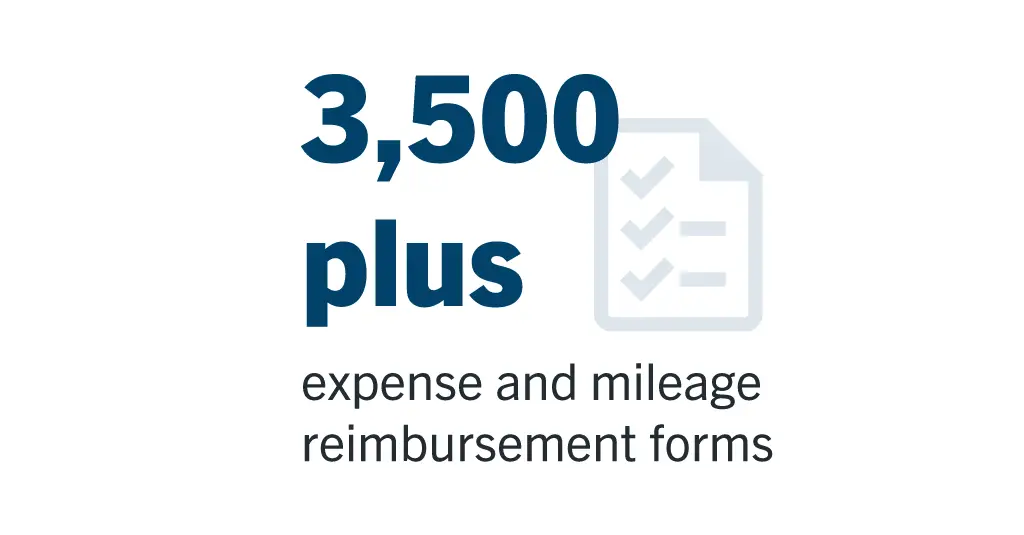 “Laserfiche is the automation engine behind a lot of the tools or applications that we’re using which don’t have a good user interface to do the things we need to do,” said Joshua Hung, business systems analyst at PAUSD.
“Laserfiche is the automation engine behind a lot of the tools or applications that we’re using which don’t have a good user interface to do the things we need to do,” said Joshua Hung, business systems analyst at PAUSD.
In addition to connecting formerly disparate sources of information and enabling automation of key workflows, Laserfiche has helped to create a culture of continuous improvement and process automation at the district.
“Laserfiche has facilitated better communication between departments and between people,” Moore said. Mapping out processes to validate or question each step has strengthened teams’ understanding of how or why actions are taken. “It’s really helped define our organizational processes in a way that I don’t think anyone in the organization understood. We’ve got a whole list of departments and processes that touch Laserfiche, from our student services to human resources, to our business office and our educational services. Laserfiche has been the backbone.”
One critical process that helped to get teams excited about Laserfiche-driven improvements was the Head Injury Protocol. Because head injuries — from minor bumps to serious blows — can have serious health implications, the process of reporting them requires significant documentation and multiple notifications to be distributed internally and externally.
Transforming the legacy, paper-driven process with a Laserfiche solution meant that documenting these events were now a lot less manual and less time-intensive, but also reported with more accuracy and accountability.
Because of the integration between Laserfiche and Infinite Campus, a staff member can now enter a student number into the Laserfiche form and the necessary information populates the form — parents’ contact information, parents’ email addresses, etc. From there, the staff member simply answers the required questions and submits the form. The principal then approves it, and the information is distributed to the nurse’s office, risk management, legal services, and the child’s parents.
Transformation of the Head Injury Protocol inspired various teams to realize the power of Laserfiche solutions. “It’s a really fun place to be,” Moore said. “Our users are bringing ideas to us, and we’re able to evaluate and prioritize projects. We’re thinking about our pain points as an organization and how we can create Laserfiche Forms processes to solve them.”
Building on the initial success, PAUSD began creating more standardization around other processes that require the alignment of multiple departments, approvals and systems.
“Our entire organization’s staff is very competent and wants to be empowered to do the job themselves,” Moore said. “That’s where Laserfiche fits in. We help by building small pieces for them or helping to standardize a process. Laserfiche empowers them to complete the tasks that they’re charged with without requiring a lot of tech team intervention.”
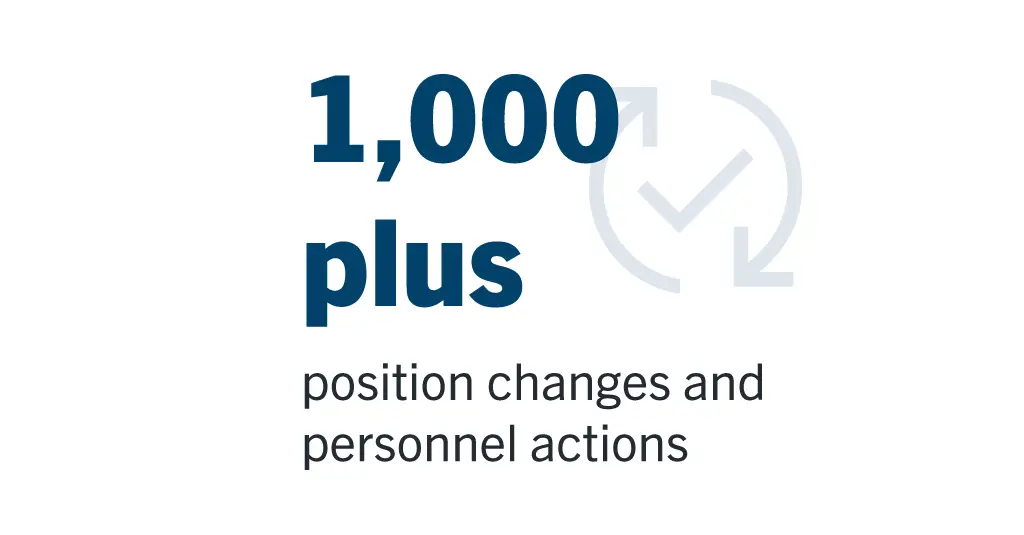 A complex yet critical process at the school district, Position Control is one such process which enables the district to track hiring and monitor costs related to various positions. Previously a paper form that was physically passed from stakeholder to stakeholder, the process is now digital and automatically routed in Laserfiche, leveraging an integration with the district’s ERP system. “The Laserfiche process ensures that we are fulfilling the necessary roles from an HR hiring perspective, to the business fiscal department, making sure there’s budget allocated for it,” Moore added.
A complex yet critical process at the school district, Position Control is one such process which enables the district to track hiring and monitor costs related to various positions. Previously a paper form that was physically passed from stakeholder to stakeholder, the process is now digital and automatically routed in Laserfiche, leveraging an integration with the district’s ERP system. “The Laserfiche process ensures that we are fulfilling the necessary roles from an HR hiring perspective, to the business fiscal department, making sure there’s budget allocated for it,” Moore added.
The updated, expedited process extends to the IT team, which is now automatically notified when people are hired so that accounts and access can be set up immediately. “We want to make the new employee feel welcome,” Moore explained. “We’re onboarding them with a good experience and making sure they have everything they need so they’re ready to go on day one.”
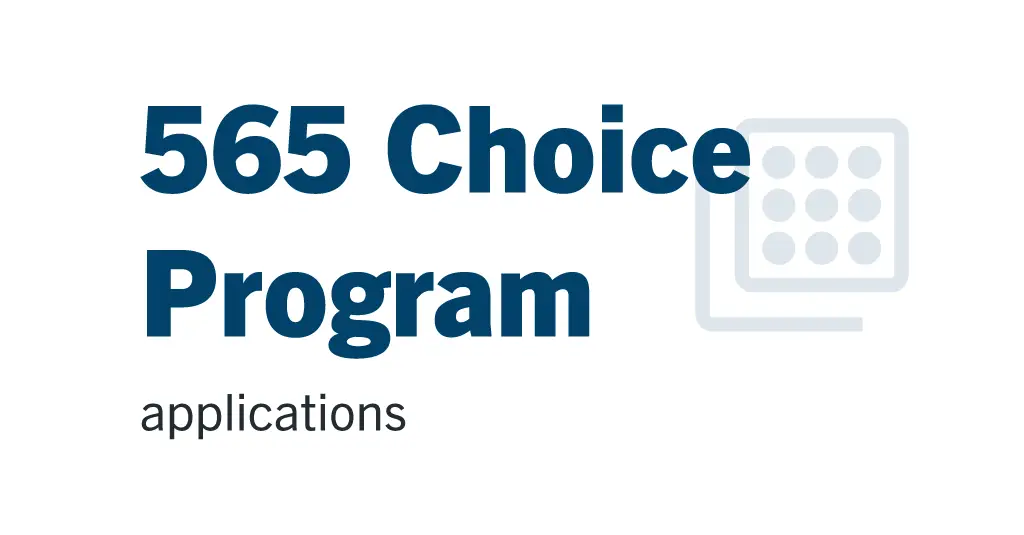 As PAUSD builds a more automated future, Moore and his team understand the importance of being digital-first. One large step the district took toward this goal was to digitize all student cumulative folders, which contain students’ permanent records, including personal information, enrollment, academic records, and other relevant information. The IT team built a Laserfiche form and workflow to input, tag and sort all student documents into the correct places.
As PAUSD builds a more automated future, Moore and his team understand the importance of being digital-first. One large step the district took toward this goal was to digitize all student cumulative folders, which contain students’ permanent records, including personal information, enrollment, academic records, and other relevant information. The IT team built a Laserfiche form and workflow to input, tag and sort all student documents into the correct places.
“We can say at this point that all of our active files are electronic,” Moore said. “Some information comes in as paper if it starts in another district, for instance, or it may be a doctor’s note that needs to be scanned in. But it’s scanned in via a Laserfiche form.”
This digital-first approach is also evident in the processes that collect information externally, as in PAUSD’s Choice Programs process. PAUSD Choice Programs offer parents and students options beyond their assigned neighborhood school, providing diverse learning environments for different interests and needs.
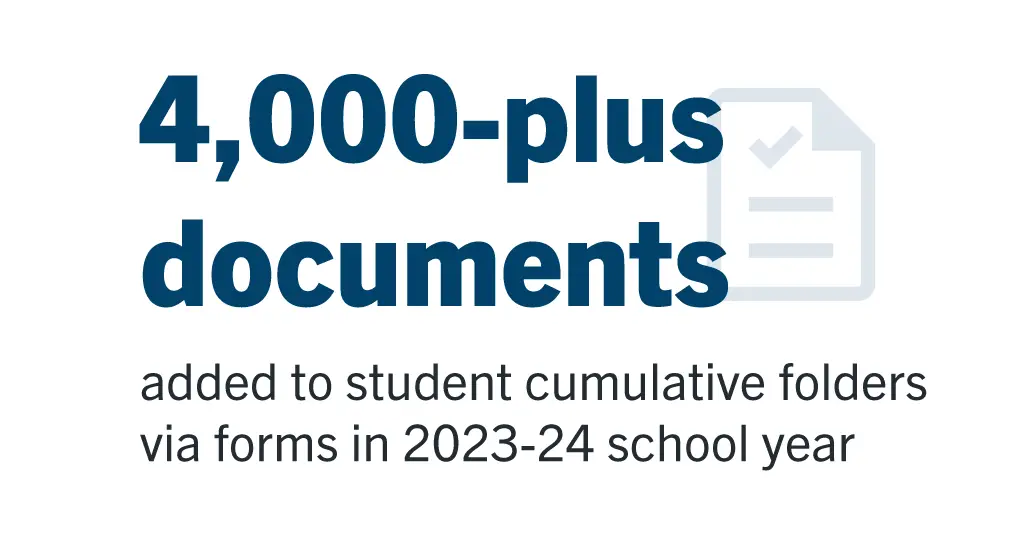
The district enables parents to fill out a public Laserfiche form, which is routed to staff members who validate the information through an integration with the SIS. The workflow also pulls additional data into the form that needs to be evaluated.
“These lookups save reviewers a lot of time, because instead of clicking to five different pages where the information exists, it’s all there on that one page,” said Hung. Additionally, the Laserfiche form enables the district to collect accurate data from the outset, eliminating the time-consuming data cleaning that used to be inevitable in the legacy process. “We also created a notification process with Laserfiche, to make sure that parents and students receive the right notifications for the specific lottery programs they are being accepted to. Our staff can just click a button that sends out notifications as part of the business process; it’s made it a lot less stressful.”
The IT team continues to innovate the organization’s many processes and procedures that make up PAUSD’s operations. One of the best parts of using Laserfiche for this innovation, the team says, is that they know they are not alone.
“We go to the community events to connect with other Laserfiche users, and we communicate about what challenges they’ve run into, or what new processes they are trying,” Hung added. “We learn from them, and we can pass on what we’re doing, too.”
As the district grows, the technology team is confident in its ability to support the student-centric mission of the organization. Through digital solutions, PAUSD can prioritize the programs and budget items that are going to have a positive impact on student outcomes.
 “We’re still adding people and adding positions, but what we’re not talking about adding is people to simply process paperwork or process data,” said Moore. “We’re more focused on how we can better use people and budget to serve students.”
“We’re still adding people and adding positions, but what we’re not talking about adding is people to simply process paperwork or process data,” said Moore. “We’re more focused on how we can better use people and budget to serve students.”
Persistent labor shortages are a pressing challenge for today’s manufacturers. The industry’s current skills gap is predicted to balloon to 2.1 million unfilled jobs by 2030, which will cost employers an estimated $1 trillion per year. This makes adding automation to increase efficiencies and optimize throughput a top priority across the industry. Smart manufacturing technologies, ranging from digital twins and robots to the use of data analytics to streamline production processes, promise to ease the difficulties associated with the current labor shortage. But automating factory floor operations isn’t simple. It requires massive investments in equipment, data infrastructure and employee training.
Manufacturers may be eager to embrace smart technology innovations, but leaders in smaller firms may struggle to understand where to begin. Meanwhile, larger enterprises are often inhibited by organizational silos or a need to prove short-term return on investment (ROI) when end results may be months, if not years, in the future. Implementing the right data strategy and enterprise architecture can make it possible to overcome these obstacles.
Many manufacturing firms — especially those with complex compliance requirements — create and process large volumes of documents to support their operations. To avoid redundancies and inefficiencies, they need to leverage automation to create a single source of truth and align workflows across the entire organization. This sets the foundation for digital transformation. The right data management strategy successfully melds data across diverse business processes — from sales and inventory management through logistics and quality assurance — into a unified informational backbone. With this data strategy in place, manufacturers will be prepared for success in smart manufacturing.
The National Institute of Standards and Technologies (NIST) defines smart manufacturing as a set of fully integrated, collaborative systems that respond in real time to meet changing demands and conditions in the factory, in the supply network and from customers. Realizing this vision requires harnessing digital technologies to realize greater efficiencies than are possible in traditional production processes. Machines and operators should be sharing information about performance, efficiency and maintenance needs on an ongoing basis to maximize agility and minimize unplanned downtime.
Becoming “smart” means embedding sensors in production equipment to gather data about operational status and performance. But it also requires an infrastructure for sharing, processing and analyzing that data. Taking advantage of the cloud’s near-infinite scalability makes it possible to manage the enormous volumes of data involved.
A mature smart manufacturing ecosystem involves much more data than what’s output by operational technology (OT) systems and sensors, though. It should also incorporate product designs, sales information, logistics tracking (for both finished products and materials), financial results and more. Thinking holistically about all of this data is the secret to successfully advancing your organization’s smart manufacturing maturity.
This playbook will give a three-step roadmap to ready your organization for smart manufacturing. Standardizing document and data management paves the way for digitizing business processes across the organization. This will ultimately allow you to glean value from the smart systems on your factory floor faster and more easily.
Want to learn more? Download the full ebook: 3 Steps to Ready Your Business for Smart Manufacturing.
Revamp Your Repository! Learn automation, folder structure & reprocessing techniques to improve organization and streamline your document management.
Join us for this on demand session! You've learned some best practices for your repository, but how can you put them into practice in your existing repository? We'll share strategies for optimizing an existing Laserfiche repository, including opportunities for automation, managing your folder structure, and reprocessing documents. This session is ideal for Laserfiche administrators familiar with general Laserfiche concepts.
Agenda
SITUATION
• 2,000 staff responsible for individuals across nearly two dozen facilities
• Needed a way to streamline information management
RESULTS
• Saved considerable costs by no longer paying for physical storage or shipping files between facilities
• Increased accuracy while mitigating lost or outdated information
Spanning facilities across the state, the Idaho Department of Correction (IDOC) represents nine prisons, five community re-entry centers, and seven district probation and parole offices. Its mission is to “create a model correctional system that provides equitable access to programming and opportunities that reflect a community experience, foster connection and restore victims of crime.”
With a litany of documents, different business systems and overall legality playing major roles at the Department of Correction, IDOC needed a “system of systems” to support its complex information management needs.

Laserfiche fulfilled many of IDOC’s initial requirements, and today the organization continues to work with Laserfiche and solution provider MCCi to leverage its integration, forms and automation capabilities to streamline information flow and improve workflows while finding new ways to better serve its thousands of staff and the people in their care.
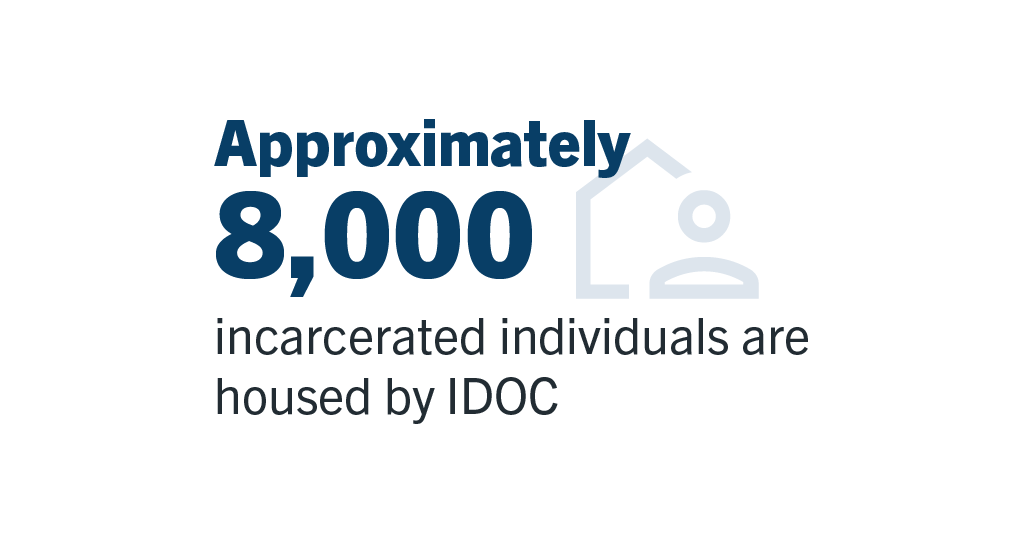 Housing approximately 8,000 incarcerated individuals, IDOC is accountable for managing people convicted of felony offenses and sentenced to prison, probation or a period of “retained jurisdiction.”
Housing approximately 8,000 incarcerated individuals, IDOC is accountable for managing people convicted of felony offenses and sentenced to prison, probation or a period of “retained jurisdiction.”
IDOC also oversees approximately 24,000 individuals on probation/parole, and supervises those living in the state’s communities, offering education, treatment and re-entry services to assist in lowering relapse behavior.
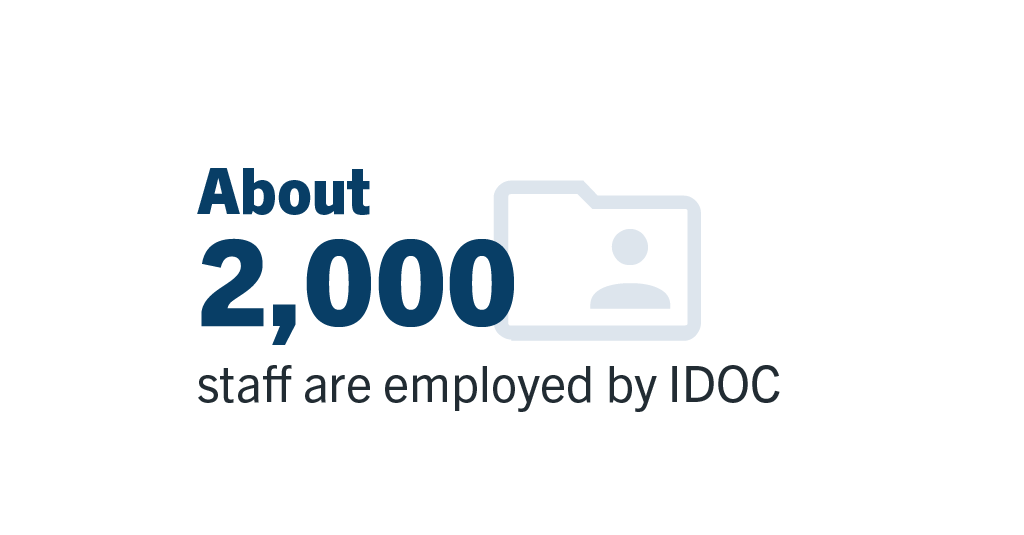 About 2,000 staff are employed at IDOC spanning its three divisions (Prisons, Probation and Parole, and Management Services), with roles including security positions such as correctional officers, and non-security positions such as teachers, human resources, mental health clinicians and more.
About 2,000 staff are employed at IDOC spanning its three divisions (Prisons, Probation and Parole, and Management Services), with roles including security positions such as correctional officers, and non-security positions such as teachers, human resources, mental health clinicians and more.
IDOC’s complex operations require the organization to house information in multiple Laserfiche repositories, the main ones being human resource files, investigation files, policies and SOPs (standard operating procedures) that are public and available to staff.
To facilitate the efficient flow of information throughout the organization as well as with external providers, IDOC has built a solution that leverages a Laserfiche API integration with its internal client management system (CMS). Because the CMS is only available to staff on the internal network, IDOC uses the API to enable external providers to submit data through Laserfiche Forms, which then get reviewed by our providers internally.
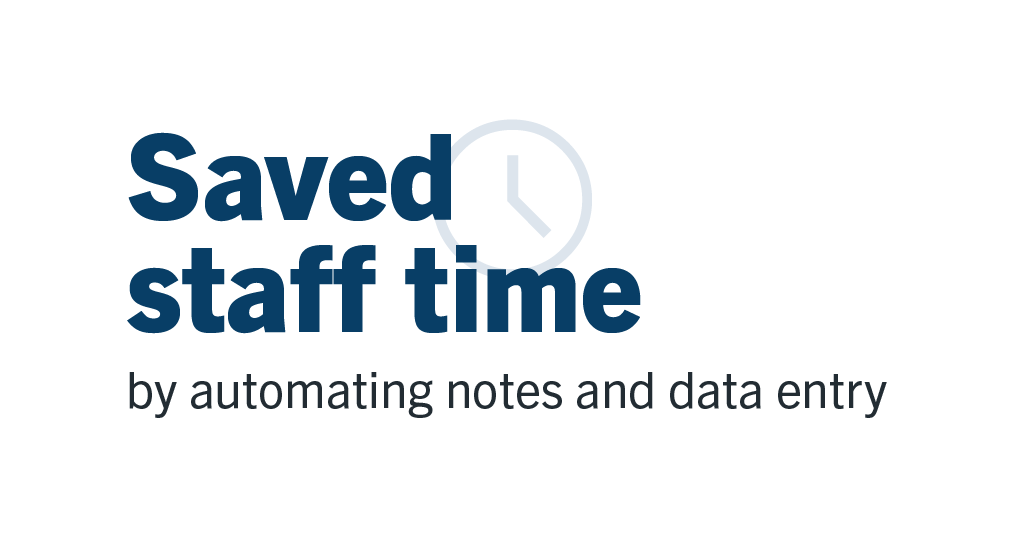 “The value provided by this integration is huge for us,” said Cassie Lint, project manager at IDOC. “With this integration we’re able to save staff time by automating notes and data entry, plus assist our external IDOC partners by enabling auto-filling of publicly available information on forms as they are filling them out.” Meanwhile, as data is submitted to IDOC, Laserfiche helps to standardize the input, making the data easier to find, use and report on.
“The value provided by this integration is huge for us,” said Cassie Lint, project manager at IDOC. “With this integration we’re able to save staff time by automating notes and data entry, plus assist our external IDOC partners by enabling auto-filling of publicly available information on forms as they are filling them out.” Meanwhile, as data is submitted to IDOC, Laserfiche helps to standardize the input, making the data easier to find, use and report on.
The approach to continuous improvement has also led IDOC to digitize its medical records for management within Laserfiche repositories. “We are working with multiple departments to make sure documents are imported correctly and have the correct metadata attached to them, so that when they get filed into the client and resident management files, they are easily relocatable by OCR text or the metadata associated with those files,” said Lint.
The benefits IDOC has experienced have been immediate. “We no longer have to pay for physical storage, shipping of the files between facility locations, documents getting lost or even misfiled — even digitally,” she added. “OCR enables us to search on text recognition. If a document is misfiled, we can still locate it and re-file it. In physical files, if something is in the wrong folder, we may never find that information.”
Digitizing medical records in Laserfiche also eases the process when clients move to different facilities, which previously required the transport of boxes to different locations, which introduced additional cost and the risk of misplaced or unauthorized access to information.
“Laserfiche enables us to restrict portions of client files to only those who have the appropriate permissions to access,” Lint said. “We utilize forms for access requests and integrate with our IT support system to create tickets as needed once access requests have been approved.”
As IDOC looks ahead, there are numerous plans for broadening Laserfiche’s use. The first will be implementing records management with IDOC’s documentary repository systems. IDOC is currently in the discovery phase of determining the record custodians and retention requirements to better manage document lifecycles.
“It’s important to not host information and documentation that is out of date,” Lint said. “Not only is that documentation no longer valid or useful, but it could also be returned for a subpoena or e-discovery or a public records request. It could increase risk of litigation or misunderstandings, or discovery of information that is no longer pertinent to the client or resident.
”Laserfiche will help IDOC to automate the processes around records management lifecycles, which are dictated by federal, state and local government recordkeeping requirements.
IDOC continues to look for new ways to innovate processes and information management. As part of its 2024-2027 Strategic Plan, it aims to leverage technology to reduce manual data collection burden on staff and increase time savings.
Lint explained that she sees opportunity in potentially working with local counties to integrate their Laserfiche environments with IDOC’s, enabling better communication and minimizing duplicate data entry, or the need to fax or email documentation.
Additionally, IDOC has plans to replace an in-house built web application — that requires a special database — with Laserfiche, creating even more efficiencies and cost savings. “We can take advantage of the API integration with our client management system, and reduce the amount of support and technical requirements that the in-house web application needed,” Lint said.
Ultimately, Lint sees in Laserfiche a system that takes care of the many manual and granular tasks that IDOC employees should not have to spend time on — instead, they should be focused on the mission of creating safer communities and increasing the success of the individuals under IDOC’s jurisdiction.
 “Laserfiche enables us to develop processes so they’re super easy to relate to and use, and then have the back-end load take care of all the heavy details that the end user doesn’t need to know or interact with,” Lint said. “It just takes that burden off employees. And Laserfiche makes that easy to do.”
“Laserfiche enables us to develop processes so they’re super easy to relate to and use, and then have the back-end load take care of all the heavy details that the end user doesn’t need to know or interact with,” Lint said. “It just takes that burden off employees. And Laserfiche makes that easy to do.”